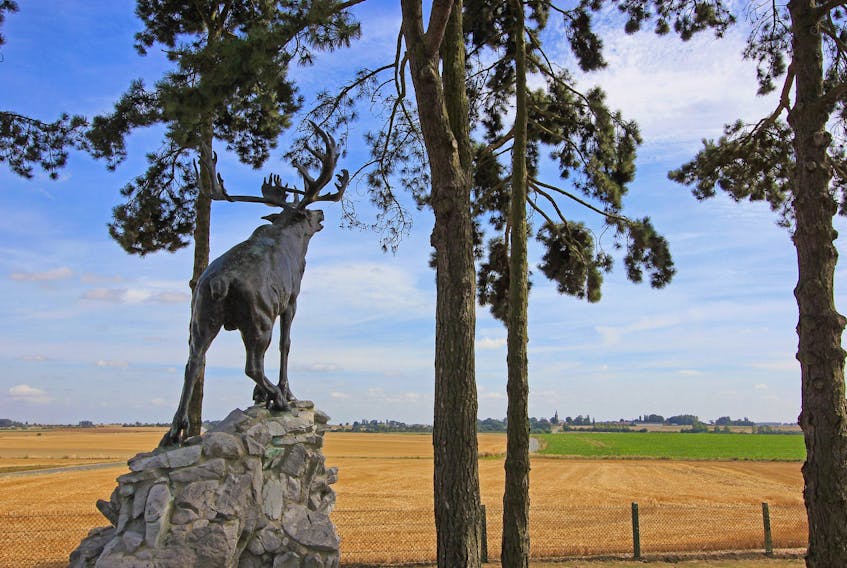ST. JOHN'S, N.L. — Innovative NL, an engineering and project management firm in St. John’s, has been selected to undertake the fabrication of a bronze caribou monument for installation at Gallipoli in Turkey, thereby finally completing the Royal Newfoundland Regiment’s Trail of the Caribou.
That announcement was made Wednesday by the Government of Newfoundland and Labrador, in partnership with the Royal Newfoundland Regiment Advisory Council and College of the North Atlantic (CNA).

The estimated value of the contract is $194,000. The sixth caribou monument will be placed 25 metres northwest of the Hill 10 Cemetery in Gallipoli, which is the resting place for a dozen Royal Newfoundland Regiment soldiers, including Private Hugh McWhirter, the Regiment’s first casualty in the fighting at Gallipoli during the First World War. The battle, which went from February of 1915 to January of 1916, saw members of the British and Empire armies, along with forces of allies, clash with those of the Ottoman Empire and Germany.
“One of the key objectives of the Royal Newfoundland Regimental Advisory Council in commemorating the 100th Anniversary of the First World War was to complete the Trail of the Caribou in Gallipoli, where the then Newfoundland Regiment first went into battle." — Ron Penney
Expected to weigh 1,500 pounds, the bronze caribou monument will measure approximately 10 feet from the nose to the back and approximately eight feet from top to bottom. To assist with the fabrication process, 19 students of CNA’s Geomatics/Surveying Engineering Technology program collected point cloud data from a digital scan of the caribou monument located in Bowring Park as part of their remote sensing course.
The Government of Newfoundland and Labrador has worked closely with the Government of Canada and the Republic of Turkey to complete the Trail of the Caribou. The monument will be installed on the Gallipoli Peninsula, where the Regiment earned its first gallantry awards before it went on to fight with distinction on the Western Front.

“One of the key objectives of the Royal Newfoundland Regimental Advisory Council in commemorating the 100th Anniversary of the First World War was to complete the Trail of the Caribou in Gallipoli, where the then Newfoundland Regiment first went into battle after completing its training in the United Kingdom, the only regiment from North America to have served in that campaign,” said Ron Penney, the past chairman of the Royal Newfoundland Regiment Advisory Council.
The Trail of the Caribou presently extends through northern France and Belgium at Beaumont-Hamel, Masnières, Gueudecourt, Monchy-le-Preux, and Kortrijk, sites significant to the Royal Newfoundland Regiment and its accomplishments, contributions and sacrifices.
This story has been updated.









